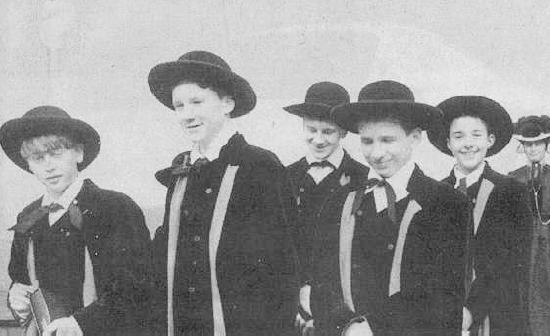
Figure 1.--These boys from the Black Forrest are taking their confirmation in folk costumes. These boys are Protestant confirmees. The Black Forest is mixed, some villages are Catholic and others Protestant.

Folk or ethnic costumes are now somewhat romanticized versions of clothing styles that were once worn in Germany. The lederhosen outfits worn in Bavaria are probably the most widely recognized Herman folk costume. There are, however, many different outfits worn in the various regions of Germany. Most have nothing what-so-ever to do with lederhosen. Modern Germany is a relatively recent creation. Unification took place in 1861 as a result of the Franco-Prussian War. Even after unification, the various German states or Landen had considerable authority and estinct regional differences. Before modern communication and mass media there were significant differences between different regions. Note that this section deals with folk costumes and not differences in ordinary clothing and fashion conventions within Germany.
Most German folk costumes came into being around the 15th century and in later centuries as well. The people took over some things from the fashion that town people wore and vice versa. It was a taking and giving. That's why you can find clothes of the townspeople of
different times in folk costumes. Before that, there were restrictions.
For example farmers were not allowed to wear colours, they had to wear brown or grey.
HBC has developed some information on individual German states. These were once individualsoverign stte, but were incorporatd during 1871 in the German Empire and are now states (Landen) in the German Federal Republic.
BlackForrest folk costume can be seen on this page (figure 1). The Black Forest is in Baden, which is part of the state (Landen) of
Baden-Wuerttemberg. Baden borders on the river Rhine in the West, It is a mountanous area with dark pine-forests (hence the name). On the other side of the French river are the Vosges Mountains in Alsace-Lorraine, which has at times been under German rule. People on both sides of the Rhine speak a similar Alemannic dialect and do wear their regional costumes for special occasions. The folk costumes of Alsace-Loraine are thus similar to that of Baden and the Black Forrest. While we have very little information about the actual costumes, we do note that the black wide brimmed, rounded crown hats look similar to some hats we have noted the Pennsylvania Dutch (really Germans) wearing. The Black Forrest boys shown here are wearing folk costumes for their confirmation. Many German children are confirmed, either in the evangelical or catholic church. It is a big day for them. Baden was in the German Federal Republic (WEst Germany). In the former DDR (Communist East Germany) many boys and girls who do not belong to any church also are expressing a desire to have some sort of an inauguration nowadays (Jugendweihe). The photo seen here (figure 1) showing the confirming boys of the Black Forest could be located as the Gutachtal. A HBC reader reports, "I believe they are Gutachtal boys because a the woman wears a Bollenhut. These hats, thought to be
typically Black Forest costume, by some people, are in fact only limited to the Gutach Valley. Red woolen balls indicated this woman was still 'free', you could marry her, black ones told you that she was already married to someone."
Bavarian folk costume is perhaps best known for lederhosen. Mant Germanboys wear lederhosen, but there are regional differences. Lederhosen developed as the folk costume of (mountaineous regions) of Bavaria and neighboring Austria. However, I'm not
sure if only in Tyrol or in other regions, as well. For example, a German reader remembers a celebration of the birthday of
König Ludwig II (Mad King Ludwig) of Bavaria who built picturesque fairy tale castles. On that event all men and boys (and of
course the women and girls, too) wore the folk Tracht. It was a solemn and somehow sinister moment, as all participants were
rather grave. They had brought torches with them and the band played the Bavarian hymn. (I believe, all Bundesländer, German
states, have their own hymn.) While we aregrouping German folk costumes by he major Landen (states),they are in fact considrable differences within the various Landen. We note, for example, a destinctive style around Dachua, northeast of Munich.
We have an unidentified image of a brother and sister, probably taken in the 1900s. The image was taken by the Andr. Kothe studi at Grünburg 1/H. We think, however, that this is a stree address rather than a city. We do nor know what Landen this is in. The boy wears a rounded white hat with an embroidered white smock, small white collar, a narrow bow that extends to the shoulders, white kneebreeches, and white stockings. The girl wears a hat that I have no idea how to describe and a very large bow. She has a white blouse, dark dress with small white polka dots, and a white apron. Hopefully our German readers will be able to identify where these folk costumes come from.
Navigate the Boys' Historical Clothing Web Site:
[Return to the Main German page]
[Return to the Main lederhosen page]
[Introduction]
[Activities]
[Biographies]
[Chronology]
[Clothing styles]
[Countries]
[Bibliographies]
[Contributions]
[FAQs]
[Glossaries]
[Satellite sites]
[Tools]
[Boys' Clothing Home]
Navigate the Boys' Historical Clothing ethnic pages:
[Return to the Main ethnic page]
[Return to the German ethnic page]
[Greek]
[Irish]
[Native American]
[Scottish]
